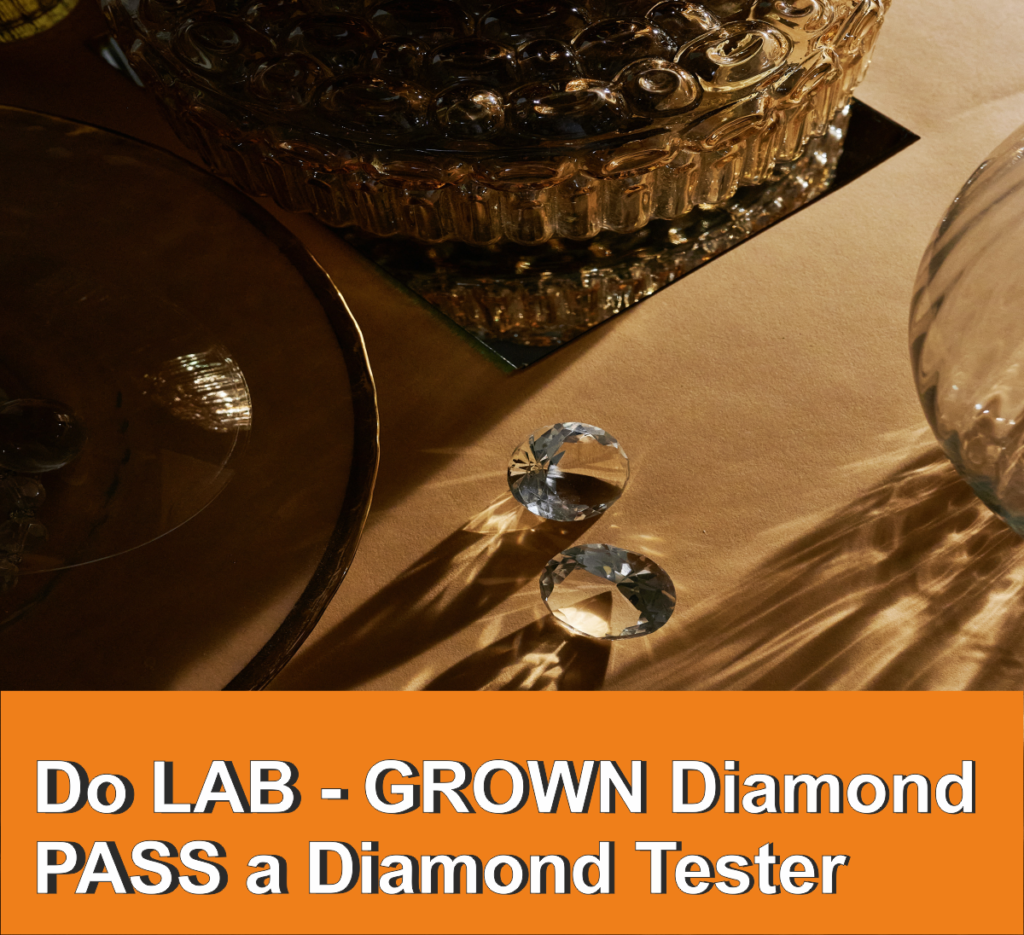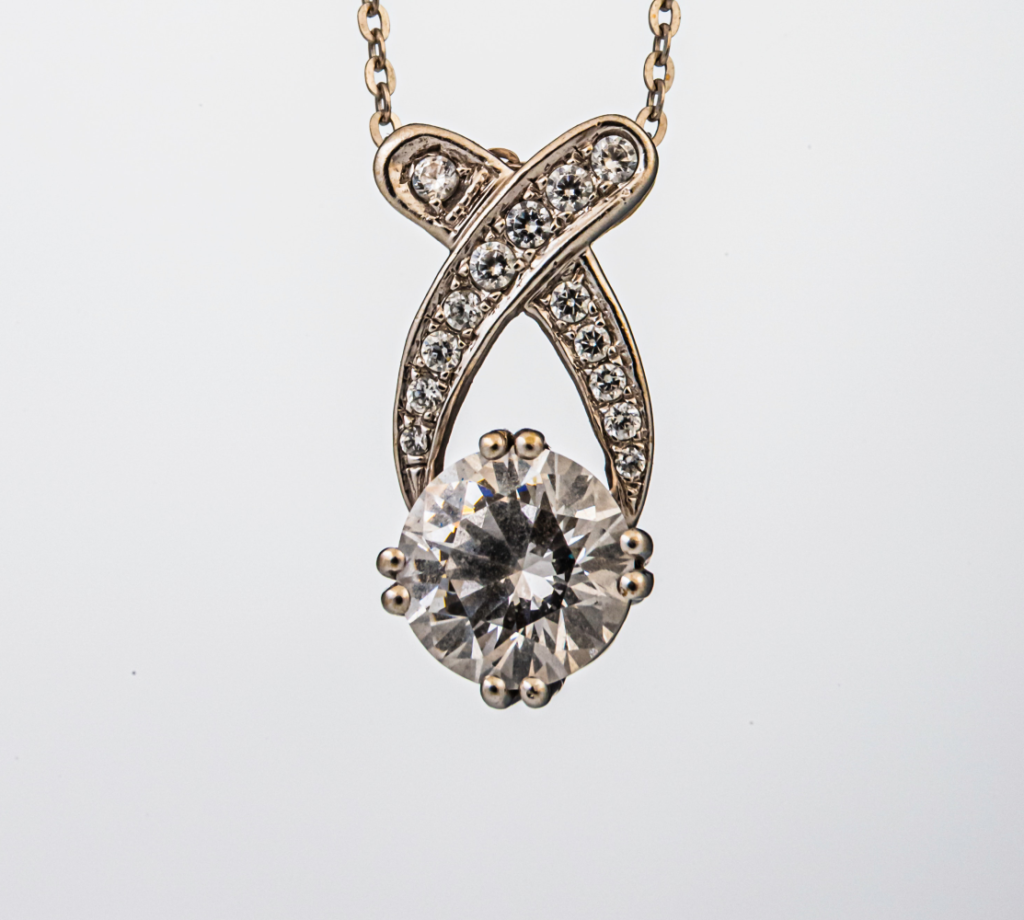Do lab-grown diamonds pass the diamond tester lab? This is a big question in the mind of the consumer. Which is normal to have? Because lab-grown diamonds have dominated the world’s diamond market in keeping with the demand for diamonds.
What does the word lab-grown mean? We can easily say that this word is made in the laboratory. Yes indeed, this precious stone is made in a laboratory.

However, the internal structure of both mined and lab-grown diamonds is almost the same. The thermal expansion method is equal.
After the ban on mining in various coal mines of the world, there has been a lot of shortage in the production of diamonds. But his demand for elite people never decreased.
Hence the rise of lab-grown diamonds to keep a supply in the face of this demand. Let us discuss this in detail.
what is a lab-grown diamond?
What is a lab-grown diamonds? It is impossible to explain the answer to this question in the corresponding method. Because to know lab-grown diamonds, it is necessary to know their origin.
Identifying lab-grown diamonds is not only difficult but impossible. There is such a trend.
Is this really impossible? Nothing at all. You will learn through this article how to identify synthetic diamonds through an eye loop. Why did I say the word artificial diamond now?
Yes, lab-grown diamonds have certain characteristics. Such as synthetic diamonds, man-made diamonds, and cultured diamonds names are also known. The name lab-grown diamond is particularly popular. Another name for it is CVD (Chemical Vapour Deposition).
What are the Differences between synthetic diamonds and Monzonite?
What are synthetic diamonds and another stone named Monzonite? Which is especially common in the market now? Natural diamonds, and synthetic diamonds, are very similar but Monzonite is completely different.

If we look at each of these stones and their properties, Monzonite is made from silicon carbide.
Both natural diamonds and synthetic diamonds are made of carbon. This means that the primary composition is different.
The hardness of natural diamonds and synthetic diamonds is equal. Natural diamonds have a hardness of 10 and synthetic diamonds have a hardness of 10. Monzonite hardness is 9.25.
Monzonite will stain if rubbed. But no matter how much you rub natural diamonds or synthetic diamonds, they will never stain.
If we try to know through weight. It can be seen that the weight of both is equal. The weight of synthetic diamonds and natural diamonds is 3.52. Monzonite has a lightness of 3.23, which is around that of natural diamonds.
This topic is noteworthy. Artificial diamonds and natural diamonds have equal weight. Monzonite is slightly lighter in weight. If we try to know through weight. It can be seen that the weight of both is equal. The weight of synthetic diamonds and natural diamonds is 3.52. Monzonite has a lightness of 3.23, which is around that of natural diamonds. This topic is noteworthy.
Artificial diamonds and natural diamonds have equal weight. Monzonite is slightly lighter in weight.
What do you mean synthetic diamonds? And how is it made?
I won’t go into too much depth. Diamonds began to be produced around 1950. A Russian company was the first to make it, this is popular. But they never made an official declaration.
In the 1952s, a company named General Electric was the first to officially announce that they were the first to make synthetic diamonds. Its size was very small and the cost to make it was high.
Which could not be used in jewellery? The process through which it was made is called H P H T (High-pressure high temperature). Through this method was the first to grow a synthetic diamond. Technology is changed gradually.
A new technology has come forward, its name is CVD grown (Chemical Vapour Deposition). This means that synthetic diamonds are made in two processes. An HPHT grown and CVD grown. That’s why the name CVD is popular in the market. Synthetic diamonds are actually made in two processes.
What is the HPHT process?
Some deep knowledge should be taken in this regard. There are some misconceptions in the market about high-pressure high temperatures. Two operations are done in the HPHT process.
First, the Synthetic diamond is grown and secondly, the Type 2A brown diamond is turned into a white diamond. Brown diamonds are processed to enhance the colour.
I will discuss this topic in depth on another page. Just this bit to know HPHT grown means lab-grown diamonds and HPHT process diamond means it can be natural diamond or synthetic but its colour has been whitened through the process.
How to identify synthetic diamonds or Lab-grown Diamonds?
Lab-grown diamonds are not easy to identify, that ward is fake in the market. Lab-grown diamonds could be identified through an eye loop or magnifying glass.
We can recognize the diamond when it allows. If the diamond does not allow recognition through the magnification glass and eye loop, then recognition is not possible.
Today, diamonds are known through technology in the modern era. But how will those who live in the village know the diamond? Read this blog carefully.
So let’s learn how to recognize Diamond through an eye loop. The properties of lab-grown diamonds and natural diamonds are the same, as we have already read. So how do you know?
One method of identifying them is their growth features. Natural diamonds are produced naturally at a depth of 140 km to 190 km underground.
Synthetic diamonds are created in a laboratory within two to three days. Natural diamonds are thousands of years in the making. So the growth process of both is different.
There are two types of tests. First proof test and second indicative. Proof test means where we can be 100% confirmed whether the diamond is authentic or not indicative test means, the stone made in Indicative test means, the estimated stone may or may not be a stone.
I will talk about the proof test first. In the case of the Proof test, 3 things come up.
1) Natural Diamond.
2) Synthetic Diamond.
• CVD grown process.
• HPHT-grown process
How to Know Natural Diamonds through a Loop?
When we talk about the eye loop or, Look through the magnifying glass, we see the inclusion of the diamond. Yes, the twining base is an inclusion found in natural diamonds.
Twinning is a symbol that only occurs in natural diamonds, when a diamond is extracted from a mine it is either a single crystal or a twin crystal.
When the twinning crystal comes out, some atomic distortion is created in it. Because of this, a layer can be seen inside the diamond.
The twinning layer can never be made in a lab. Sometimes if you see a twinning base diamond then it is a natural diamond.
The second inclusion is the ‘H’ channel, Which is always seen in natural diamonds.
How to understand the ‘H’channel in diamond?
Also called a growth tube. It looks like a hollow pipe. Which is shown in geometrical shape.
These inclusions are only found in natural diamonds.
3rd point:- Colourful crystals are usually visible in natural diamonds. Natural diamonds have Colourful crystals but black or brown crystals can be seen in lab-grown or synthetic diamonds.
4th points:- Natural skin. Synthetic diamond skin looks different and natural diamond skin looks different. Scratches can be seen on the screen of both types of diamonds. Scratches appear on the screen of both types of diamonds. But in natural diamonds, the texture is visible in the triangles.
These four types of symptoms can be seen in natural diamonds. If these four types of symptoms are not present then you will never know a natural diamond. That does not mean that there are no symptoms at Synthetic Diamond.
Conclusion-
Do lab-grown diamonds pass the diamond tester lab? From the above article, we understand that lab-grown diamonds can also be checked. Through this article, we will know all the symptoms through which we can understand Synthetic diamonds. I will discuss more about this in the next article. In one place, it is said that how to test only through the eye loop. So continue with me for the next article.
FAQ
Is a lab-grown diamond a real diamond?
Yes, lab-grown diamond natural diamonds and synthetic diamonds are made of carbon. This means that the primary component is the same. The hardness of natural diamonds and synthetic diamonds is equal.
But there is a lot of significant evidence to identify both of them separately.
Can a jeweller tell the difference between lab-grown diamonds?
Yes, jewellers tell the difference between lab-grown diamonds through an eye loop or magnifying glass. Although we know that the two compositions are similar, the inclusion of some significant inclusions makes them different.
Do lab diamonds get GIA certified?
Yes, Because lab-grown diamonds have dominated the world’s diamond market in keeping with the demand for diamonds. So GIA started to be certified in 2007.
Are lab-grown diamonds a good investment?
Yes, lab-grown diamonds or CVD are highly demandable man-made gemstones in the world market. Because the price is lower than real diamonds, Clarity and hardness are equal to real diamonds.
Why choose CVD diamonds?
Because of the 70% less price than real diamonds. CVD (Chemical Vapour Deposition) has dominated the world’s diamond market. This demand will increase day by day.